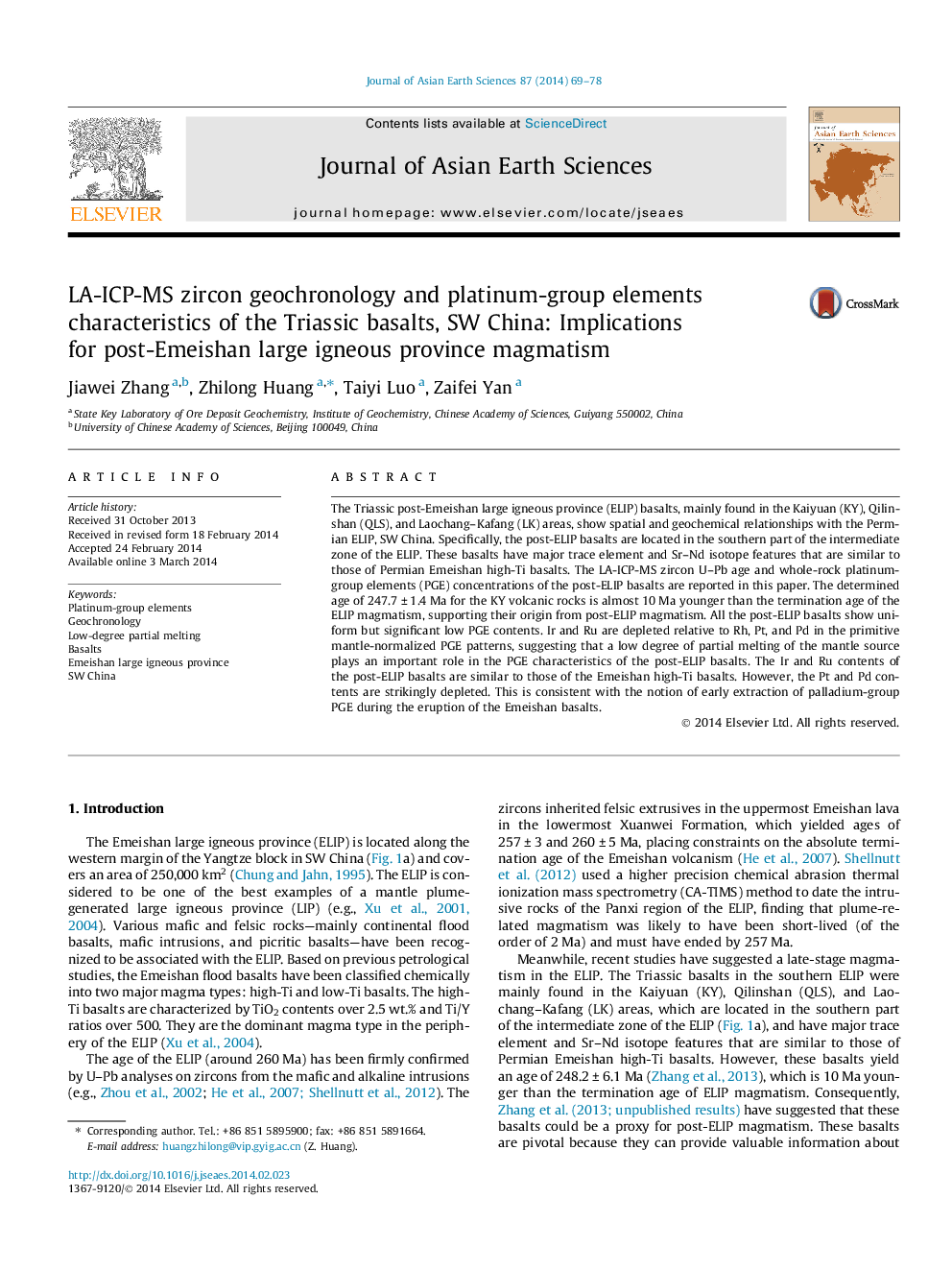| Article ID | Journal | Published Year | Pages | File Type |
|---|---|---|---|---|
| 6444415 | Journal of Asian Earth Sciences | 2014 | 10 Pages |
Abstract
The Triassic post-Emeishan large igneous province (ELIP) basalts, mainly found in the Kaiyuan (KY), Qilinshan (QLS), and Laochang-Kafang (LK) areas, show spatial and geochemical relationships with the Permian ELIP, SW China. Specifically, the post-ELIP basalts are located in the southern part of the intermediate zone of the ELIP. These basalts have major trace element and Sr-Nd isotope features that are similar to those of Permian Emeishan high-Ti basalts. The LA-ICP-MS zircon U-Pb age and whole-rock platinum-group elements (PGE) concentrations of the post-ELIP basalts are reported in this paper. The determined age of 247.7 ± 1.4 Ma for the KY volcanic rocks is almost 10 Ma younger than the termination age of the ELIP magmatism, supporting their origin from post-ELIP magmatism. All the post-ELIP basalts show uniform but significant low PGE contents. Ir and Ru are depleted relative to Rh, Pt, and Pd in the primitive mantle-normalized PGE patterns, suggesting that a low degree of partial melting of the mantle source plays an important role in the PGE characteristics of the post-ELIP basalts. The Ir and Ru contents of the post-ELIP basalts are similar to those of the Emeishan high-Ti basalts. However, the Pt and Pd contents are strikingly depleted. This is consistent with the notion of early extraction of palladium-group PGE during the eruption of the Emeishan basalts.
Related Topics
Physical Sciences and Engineering
Earth and Planetary Sciences
Geology
Authors
Jiawei Zhang, Zhilong Huang, Taiyi Luo, Zaifei Yan,
